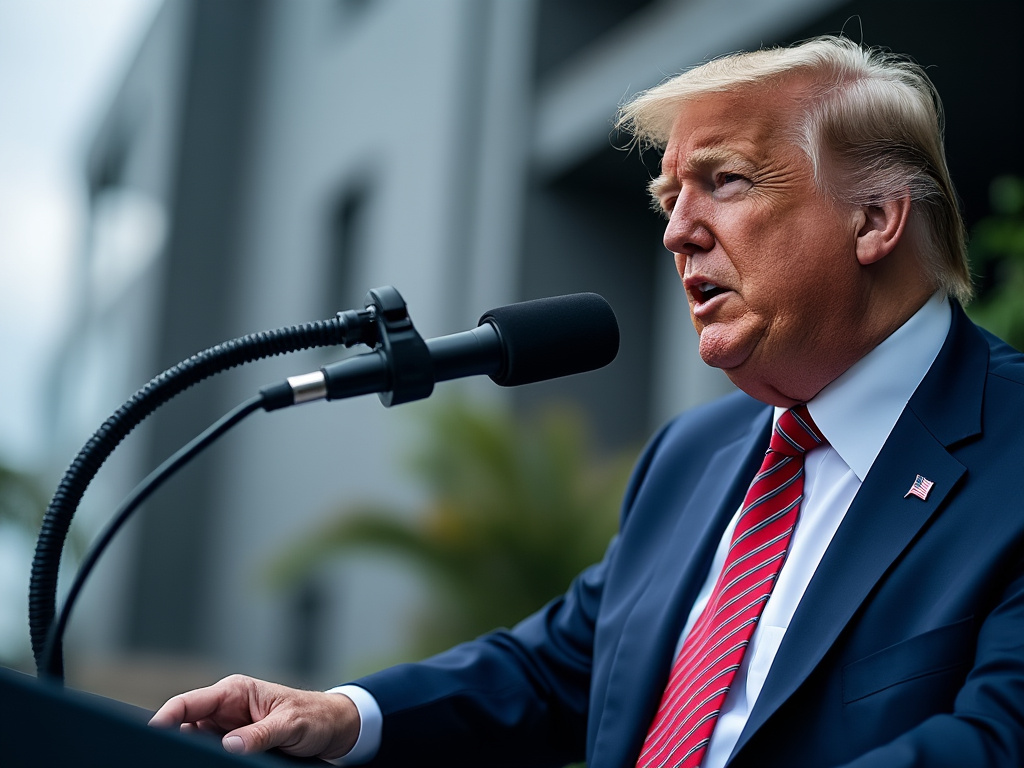
Trump's New Trade Requirements: Allies Eye Potential Tariff Reductions
The U.S. administration proposes oil purchases from Alaska as a prerequisite for alleviating tariffs on key allies.
Global stock markets experienced a rebound on Tuesday amidst ongoing discussions regarding a potential trade truce between the United States and its major allies.
The Secretary of the Treasury, Scott Bessent, commented on the substantial list of calls to the White House amid these negotiations.
President Donald Trump also expressed optimism on social media regarding an agreement with South Korea, which is currently facing a 25% tariff imposed by the U.S.
Reports indicate that various countries might find ways to avoid or minimize these tariffs, provided that they fulfill specific demands.
Central to these discussions is the proposal that these nations purchase oil from Alaska.
This condition aligns with two of Trump's primary focuses: correcting the trade balance and increasing domestic oil drilling.
The trade strategy aims to reduce the United States' trade deficit, with the energy balance being a critical component to achieve this goal.
With established drilling facilities, a capable workforce, and robust infrastructure, the U.S. seeks to increase oil and gas production, particularly by proposing new drilling projects in Alaska that would enable exports to its allies.
Bessent elaborated on the potential for a significant energy agreement involving major buyers, including Japan, South Korea, and Taiwan, which would facilitate large-scale extraction operations and sales.
Such a commercial agreement could potentially be acceptable to all parties involved, while providing immediate, productive investments that could generate jobs and help mitigate the U.S. goods deficit.
Market expectations around these negotiations have intensified, suggesting a possible granting of preferential tariff statuses to U.S. allies.
In discussions with South Korea, Trump highlighted considerations for major purchases of liquefied natural gas and the establishment of a joint venture in Alaska for a pipeline.
The intent is for the U.S. to position itself as a principal energy supplier to its allies, a stance Trump propagated during his electoral campaign with the slogan "drill, baby, drill."
For this plan to be effective, the U.S. would need to sell oil and gas at prices higher than current market rates, necessitating a commitment from its allies.
The U.S. faces stiff competition from Saudi Arabia, which is actively reducing the prices of its hydrocarbons, posing a challenge for the U.S. which cannot match these prices directly.
Historical precedents indicate that previous efforts by the U.S. to expand its energy market met resistance, such as when Saudi Arabia flooded the market with crude to suppress prices amid the U.S. shale boom in the mid-2010s.
To boost production in the U.S., it becomes essential that allied nations purchase Alaskan oil at elevated prices; estimates suggest that American oil producers require crude prices to hit approximately $91 per barrel to meaningfully increase production.
Therefore, a substantial price hike of around 50% would be necessary for financial viability.
This extraction boom envisioned by Trump hinges on securing captive demand that can sustain higher pricing than alternative suppliers.
These negotiations mark a shift from traditionally price-driven trade relations to a framework that prioritizes geopolitical criteria.
This new approach is deemed achievable, especially given the readiness of various nations to provide advantages to maintain access to the U.S. market for their own exports.
The Secretary of the Treasury, Scott Bessent, commented on the substantial list of calls to the White House amid these negotiations.
President Donald Trump also expressed optimism on social media regarding an agreement with South Korea, which is currently facing a 25% tariff imposed by the U.S.
Reports indicate that various countries might find ways to avoid or minimize these tariffs, provided that they fulfill specific demands.
Central to these discussions is the proposal that these nations purchase oil from Alaska.
This condition aligns with two of Trump's primary focuses: correcting the trade balance and increasing domestic oil drilling.
The trade strategy aims to reduce the United States' trade deficit, with the energy balance being a critical component to achieve this goal.
With established drilling facilities, a capable workforce, and robust infrastructure, the U.S. seeks to increase oil and gas production, particularly by proposing new drilling projects in Alaska that would enable exports to its allies.
Bessent elaborated on the potential for a significant energy agreement involving major buyers, including Japan, South Korea, and Taiwan, which would facilitate large-scale extraction operations and sales.
Such a commercial agreement could potentially be acceptable to all parties involved, while providing immediate, productive investments that could generate jobs and help mitigate the U.S. goods deficit.
Market expectations around these negotiations have intensified, suggesting a possible granting of preferential tariff statuses to U.S. allies.
In discussions with South Korea, Trump highlighted considerations for major purchases of liquefied natural gas and the establishment of a joint venture in Alaska for a pipeline.
The intent is for the U.S. to position itself as a principal energy supplier to its allies, a stance Trump propagated during his electoral campaign with the slogan "drill, baby, drill."
For this plan to be effective, the U.S. would need to sell oil and gas at prices higher than current market rates, necessitating a commitment from its allies.
The U.S. faces stiff competition from Saudi Arabia, which is actively reducing the prices of its hydrocarbons, posing a challenge for the U.S. which cannot match these prices directly.
Historical precedents indicate that previous efforts by the U.S. to expand its energy market met resistance, such as when Saudi Arabia flooded the market with crude to suppress prices amid the U.S. shale boom in the mid-2010s.
To boost production in the U.S., it becomes essential that allied nations purchase Alaskan oil at elevated prices; estimates suggest that American oil producers require crude prices to hit approximately $91 per barrel to meaningfully increase production.
Therefore, a substantial price hike of around 50% would be necessary for financial viability.
This extraction boom envisioned by Trump hinges on securing captive demand that can sustain higher pricing than alternative suppliers.
These negotiations mark a shift from traditionally price-driven trade relations to a framework that prioritizes geopolitical criteria.
This new approach is deemed achievable, especially given the readiness of various nations to provide advantages to maintain access to the U.S. market for their own exports.
Translation:
•
Translated by AI
AI Disclaimer: An advanced artificial intelligence (AI) system generated the content of this page on its own. This innovative technology conducts extensive research from a variety of reliable sources, performs rigorous fact-checking and verification, cleans up and balances biased or manipulated content, and presents a minimal factual summary that is just enough yet essential for you to function as an informed and educated citizen. Please keep in mind, however, that this system is an evolving technology, and as a result, the article may contain accidental inaccuracies or errors. We urge you to help us improve our site by reporting any inaccuracies you find using the "Contact Us" link at the bottom of this page. Your helpful feedback helps us improve our system and deliver more precise content. When you find an article of interest here, please look for the full and extensive coverage of this topic in traditional news sources, as they are written by professional journalists that we try to support, not replace. We appreciate your understanding and assistance.











